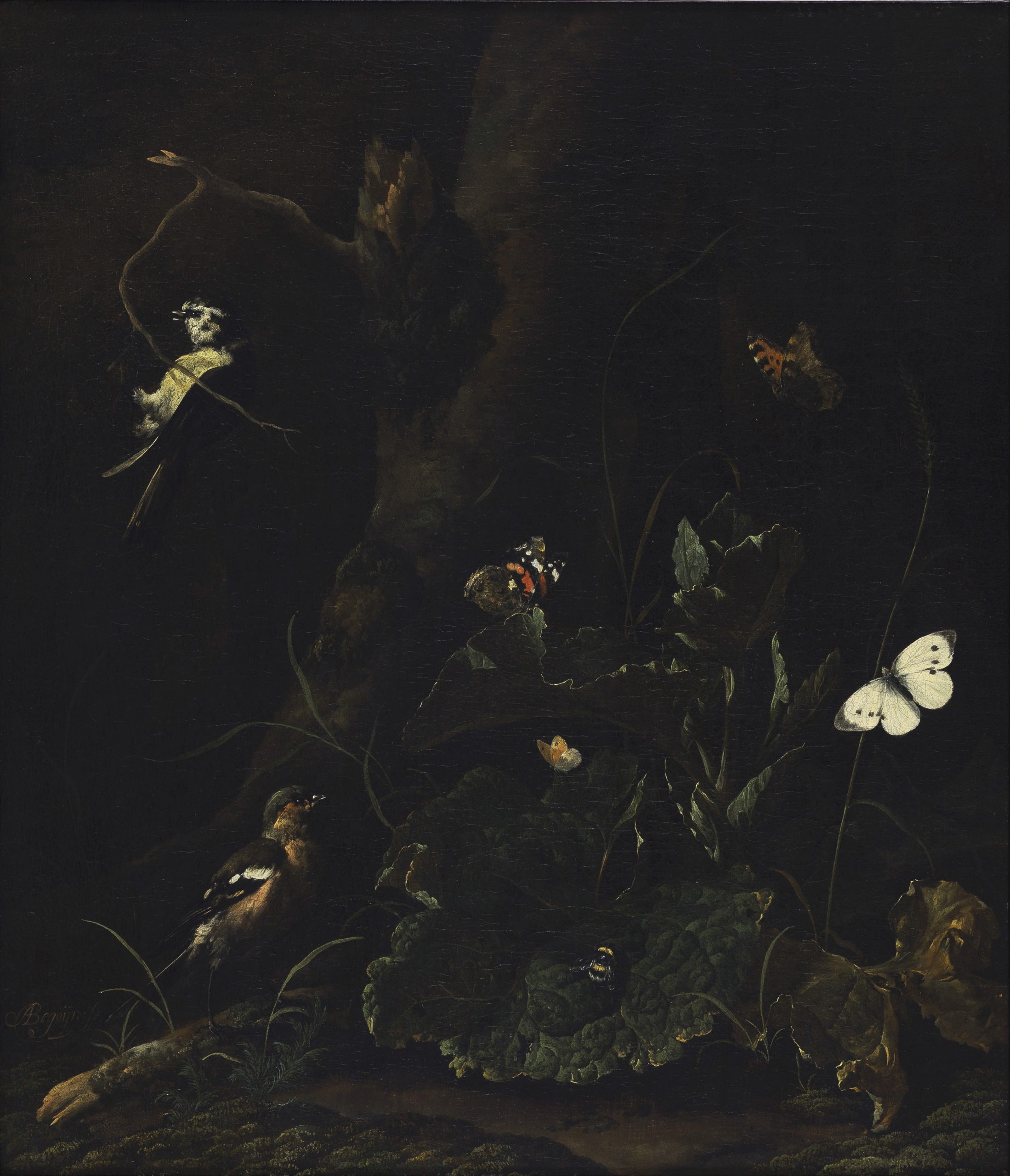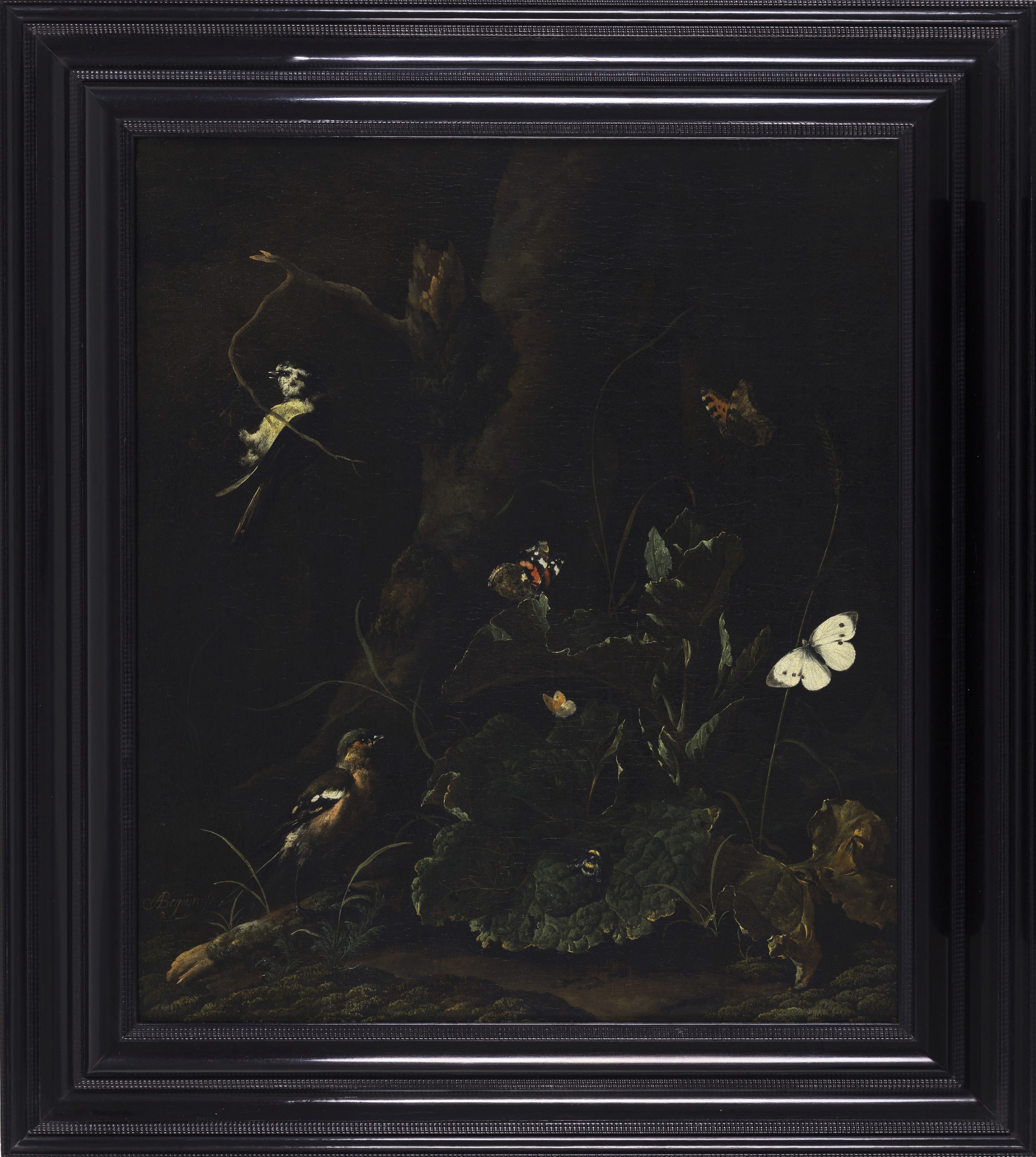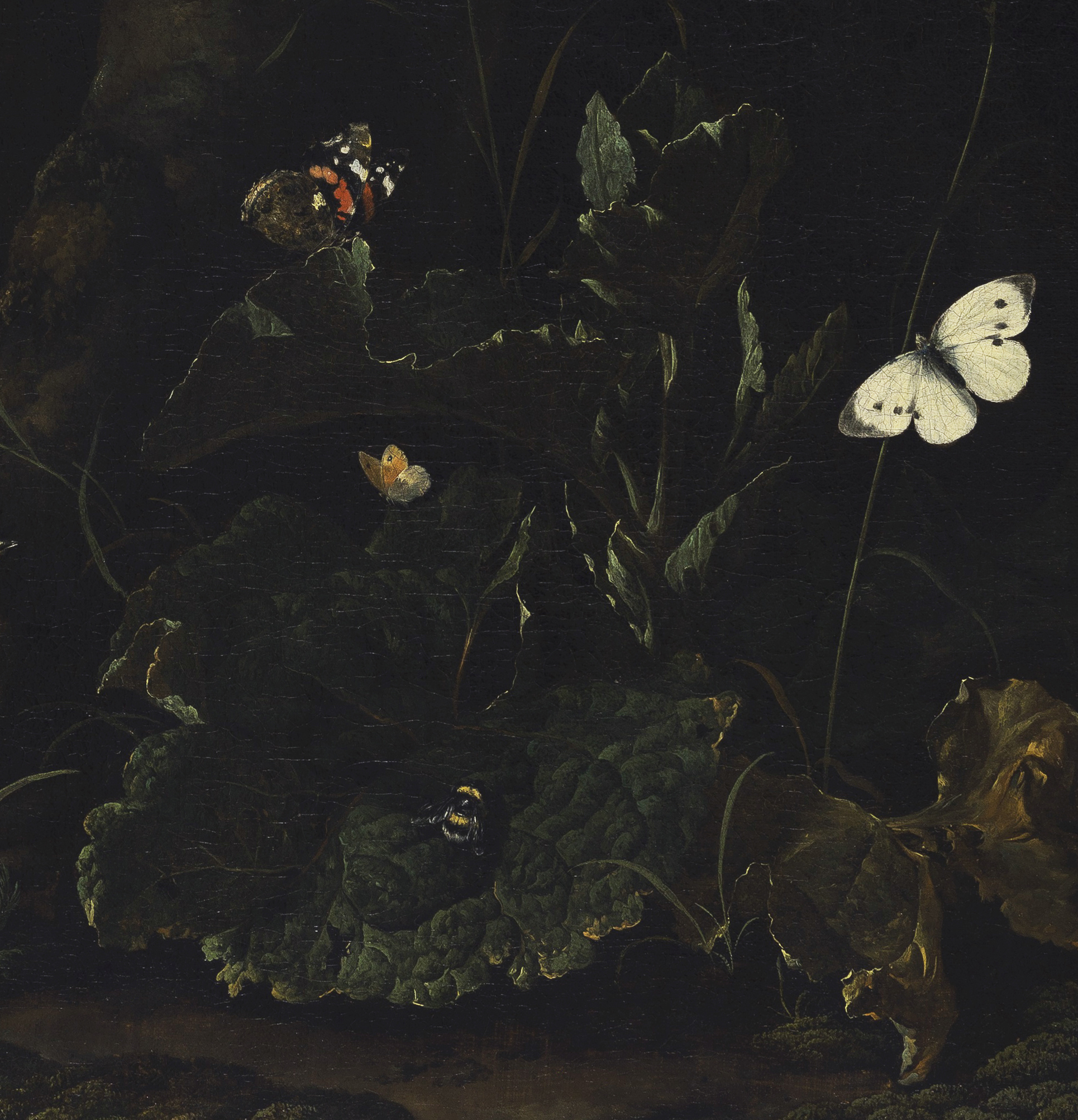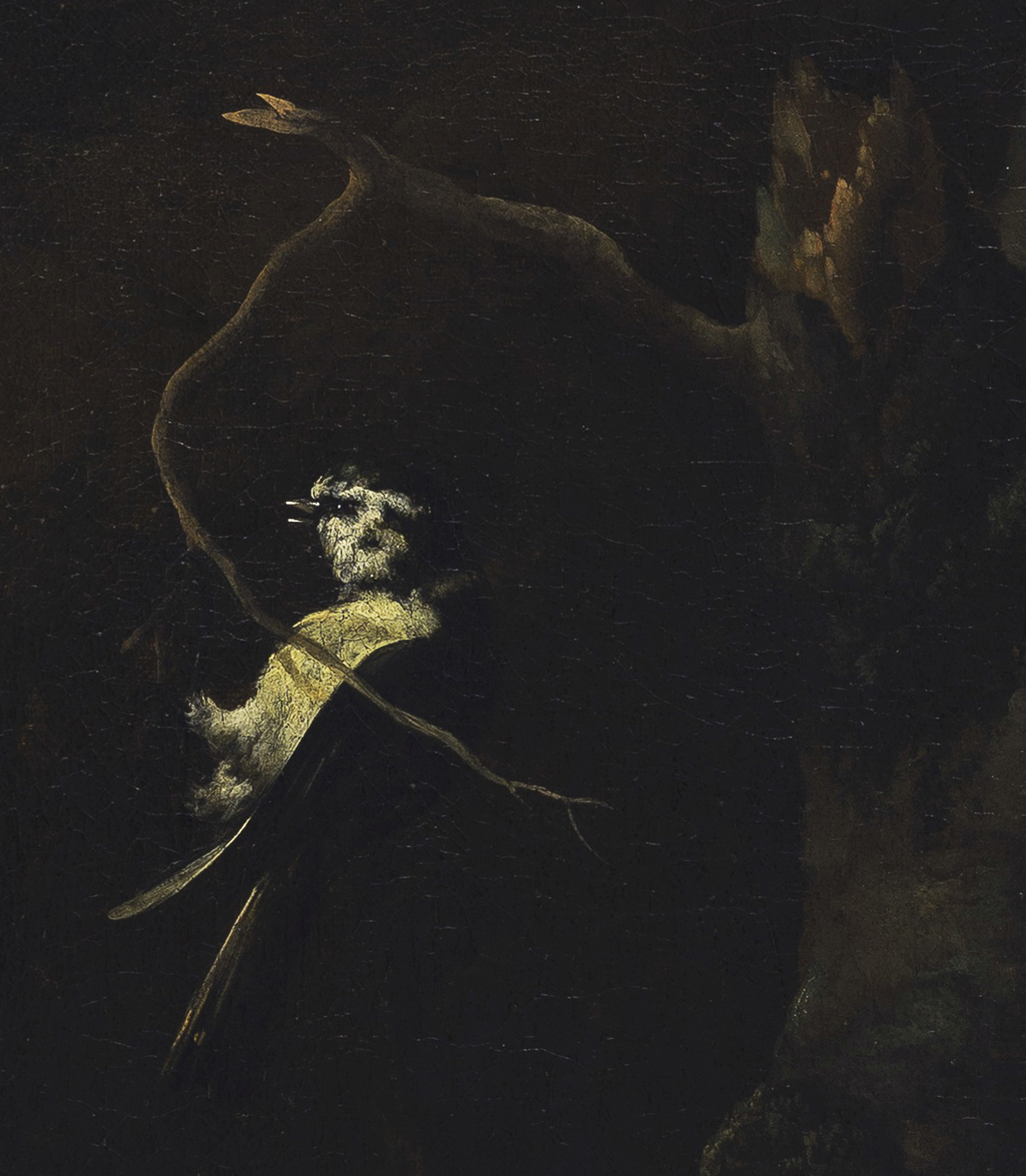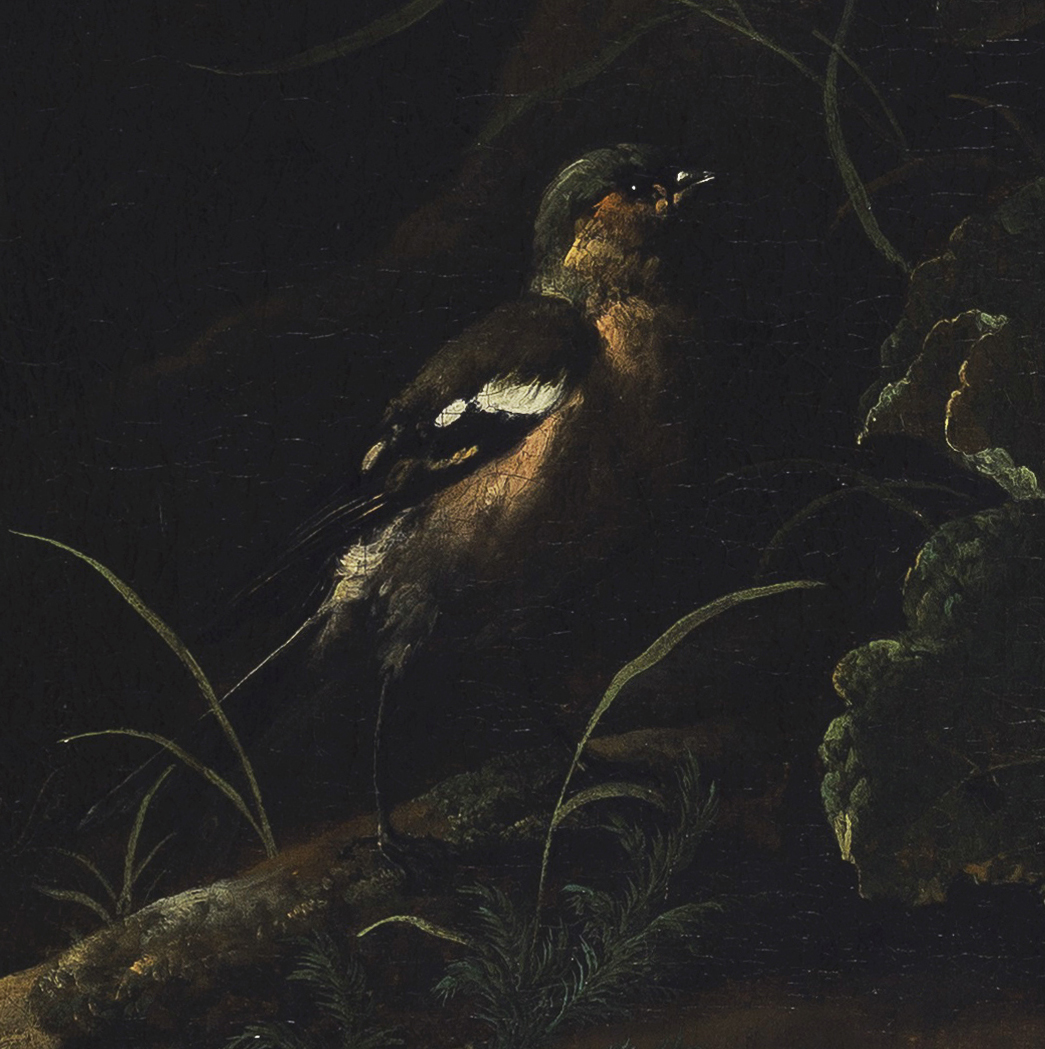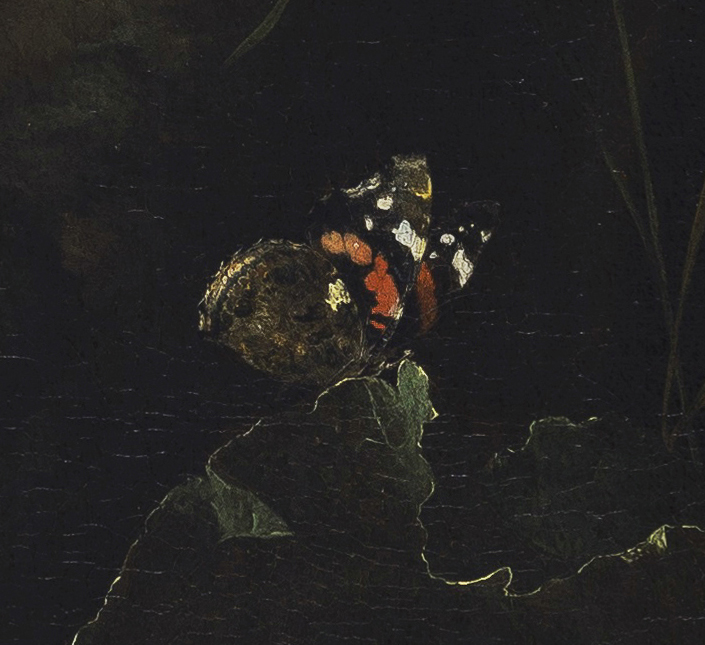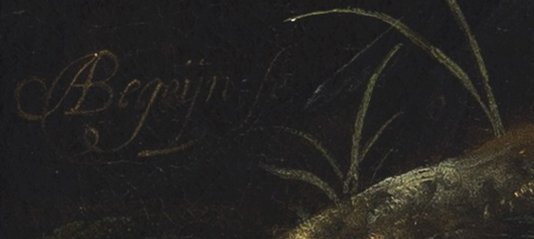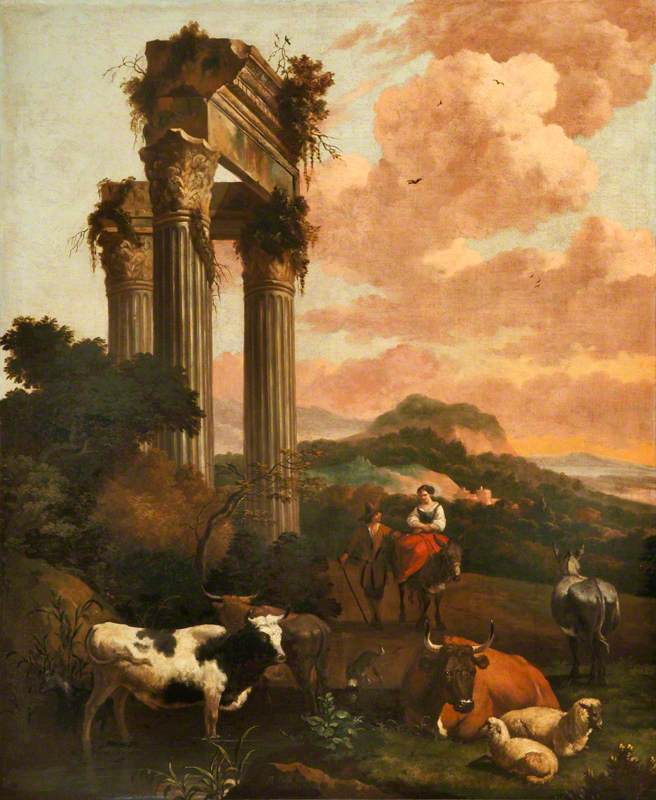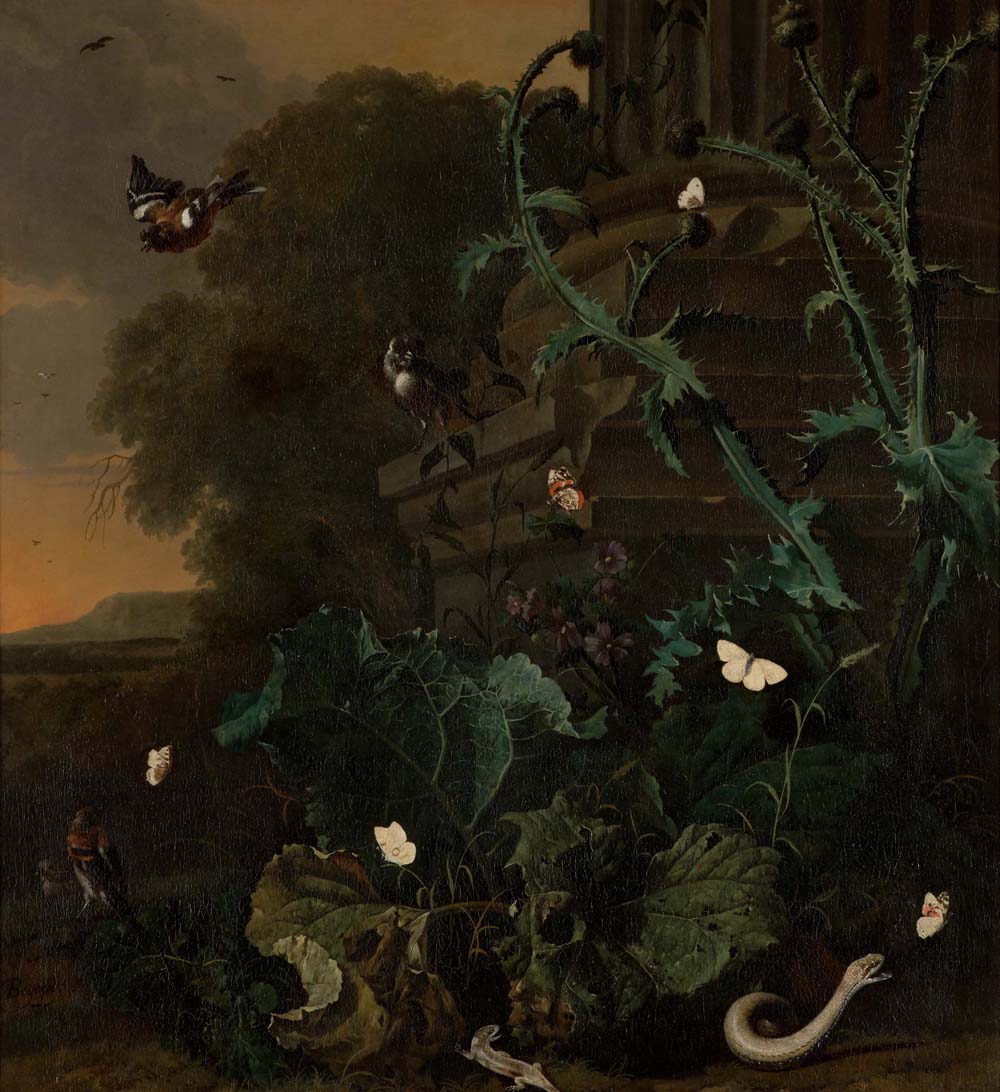ABRAHAM BEGEYN (Leiden 1637 – 1697 Berlin)
Abraham Begeyn (Leiden 1637 – 1697 Berlin)
A ‘Sottobosco’ Forest Floor Still-Life
Oil on canvas, 60.5 x 52 cm (23.8 x 20.5 inch); presented in an ebonised ripple frame of Dutch 17th-century model
Signed ‘ABegeyn fe’ (lower left, in ligature)
Provenance
~ Collection Krupp von Bohlen und Halbach, Villa Hügel, Essen, Germany
~ Private collection, Germany
***
It is the height of spring. The fresh leaves block the sun from the forest floor, shading the humble inhabitants of the forest, going about their business. A view of spring we can still experience in any Northern European forest, except that we are in the middle of the seventeenth century, looking through the eyes of Abraham Begeyn, a rare painter, who in this very period was at the height of his artistic agility, as this painting beautifully illustrates. The composition exudes calm, the colours are restrained, a symphony of earth tones, combined with an expert understanding of chiaroscuro. The virtuoso brushwork is of a brilliance that was only achieved during Holland’s Golden Age of painting.
The artist plays with his chosen subject like a poet or musician, thoughtfully balancing all the darker tones with splashes of light. The white cabbage butterfly is the simplest living creature in the scene, yet reigns supreme because its luminous white is set against the dark background. Every creature is portrayed in pigments and oil with the highest skill. Look closer at the atalanta butterfly: the fragility of its wings, the iridescence of its colours, captured in paint forever. The bird at the top left is almost nodding on its branch. Upon closer scrutiny, the humble yet noble bumblebee gains in appreciation, gently idling the time away on its leaf. Begeyn knew that he had masterly captured a fleeting moment in time, an impression which through his eyes could last for centuries, and boldly signed his work at the left. The modern viewer can only be humbled by such skill, artistry and the ‘modernity’ of his approach, all achieved, one should remember, in an age without photography.
Abraham Jansz Begeyn was born in 1637 in Leiden.1 He was apprenticed to the Italianate painter Nicolaes Berchem (1621/22–1683) and in 1658 married Margriet van Zijl in Wassenaar, near Leiden. He was registered as a member of the guild of St Luke in that city from 1655 to 1667. In 1659 and 1660 he travelled to Paris and Italy, and in 1672 he resided in Amsterdam, but left again for London, where he executed fourteen paintings for the Duke of Lauderdale at Ham House. Around 1680 Begeyn was again in France, where he painted two views of the Château de Chantilly for the Grand Condé. From 1681 he was back in the Netherlands and worked in The Hague, becoming a citizen of that city in 1683, and a member of the artists’ confraternity Pictura, as well as joining the local militia. A certain Romburgh is named as his apprentice in The Hague. Begeyn was appointed court painter to the Elector of Brandenburg in Berlin in 1688, in whose service he also produced designs for tapestries and toured the German lands in order to draw city views. Begeyn died in Berlin in 1697, according to early biographers having fallen from a scaffold, suffering from exhaustion.
Begeyn is mostly known for his attractive and sensitive Mediterranean landscapes and town views, painted in the manner of his tutor Berchem: a typical example is the Southern Landscape with Figures and Cattle, painted for the Duke of Lauderdale and still at Ham House.2 He also painted a small number of forest floor still-lifes, known as ‘sottobosco’ in Italian and ‘bosgrondje’ in Dutch, a highly original theme that was introduced in Rome during the 1650s by the painter Otto Marseus van Schrieck (c.1620–1678), who returned to Amsterdam around 1663.3 This novel subject, with realistic depictions of plants and flowers, lizards and butterflies, adders, snakes and toads, which had been considered the ‘lowest’ of creatures since the time of Aristotle, should be seen in the context of increased interest in the natural world and developments in microscopic observation, for instance by scholars in Leiden and Delft, who conducted research into zoology and botany – in Italy, the intellectual Medici court in Florence was equally fascinated and commissioned such works from Van Schrieck and other painters. Sottobosco paintings are characterised by highly accurate portrayals of plants, insects, birds and reptiles – Marseus van Schrieck was a member of the Roman artists’ society ‘Bentveughels’, where he was nicknamed ‘Snuffelaer’, as he was always looking out for little creatures.
Around a dozen bosgrondjes by Begeyn are currently known, most in museum ownership: comparable paintings by Begeyn are part of the collections of the Palazzo Corsini in Rome,4 the Staatliche Museen in Berlin5 and the Herzog Anton Ulrich-Museum in Braunschweig,6 while another sottobosco is in the Museum De Lakenhal in Leiden (fig.).7
The present painting includes a long-tailed tit (Aegithalos caudatus) at the top and a male finch (Fringillidae) perching on the branch at the lower left, and little fox (Aglais urticae), atalanta (Vanessa atalanta), gatekeeper (Pyronia tithona) and cabbage white (Pieris brassicae) butterflies, with a bumblebee sitting on the central large leaf. It has been observed that the butterflies have just emerged from their cocoons and the birds are in breeding condition, which sets the scene in late spring.8 The highly realistic portrayal of these plants and animals, combined with the atmospheric effects of this extraordinary painting attests to Begeyn’s excellence in the subject of the sottobosco.
SOLD
1. For Begeyn, see E. Schaar, ‘Berchem und Begeyn’, Oud-Holland 69 (1954), pp. 241-245 and A. van der Willigen and F. Meijer, A dictionary of Dutch and Flemish still-life painters working in oils: 1525-1725, Leiden 2003, p. 33.
2. Oil on canvas, 99 x 81.5 cm, National Trust, Ham House, Richmond, Surrey, inv. no. NT 1140018; C. Gilbert and P. Thornton, ‘The furnishing and decoration of Ham House’, Furniture History, 16 (1980), p. 91, fig. 93.
3. For the development of this subject, see Karin Leonhard, ‘Pictura’s fertile field: Otto Marseus van Schrieck and the genre of sottobosco painting’, Simiolus: Netherlands Quarterly for the History of Art, 2009/2010, vol. 34, no. 2, pp. 95-118.
4. Oil on canvas, 99 x 75 cm, Federico Hermanin, Catalogo della R. Galleria d’arte antica nel Palazzo Corsini, Roma, Bologna 1924, cat. no. 345.
5. Oil on canvas, 108 x 98 cm, Beschreibendes Verzeichnis der Gemälde im Kaiser Friedrich Museum und deutschen Museum, Berlin 1931, cat. no. 971.
6. Oil on canvas, 62 x 55 cm, Kurzes Verzeichnis der Gemäldesammlung im Herzog Anton Ulrich-Museum zu Braunschweig, Braunschweig 1932, cat. no. 382.
7. Oil on canvas, 110 x 101 cm, inv. no. S30; Stedelijk Museum De Lakenhal, Catalogus van de Schilderijen en Tekeningen, Leiden 1983, p. 69, repr.
8. We are grateful to Mr Klaas Post of the Natural History Museum in Rotterdam for identifying these species and for his further observations.
